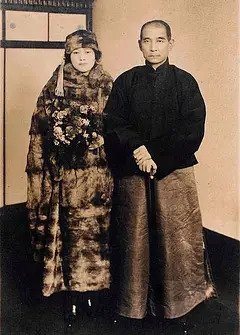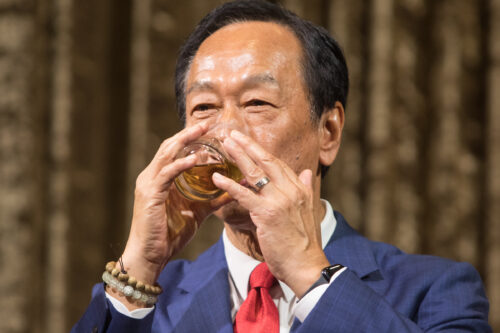The American dentist who turned Sun Yat-sen off Marxism
Sun Yat-sen's interpretation of "The Social Interpretation of History" — a self-published book with only 2,000 copies printed at the time — had crucial implications for the young Republic of China.

Taiwan’s next presidential election, slated for January 13, 2024, will mark 100 years to the week since the Kuomintang’s First National Congress in Guangzhou. While debates continue over what the elections could mean for the future of China-Taiwan relations, they are also an occasion to reflect on China’s past, and the chaotic period of ideological Westernization that gave rise to a conflict now threatening to reignite.
The KMT’s founder, Sun Yat-sen (孙中山 Sūn Zhōngshān), arrived at the 1924 congress in a strong position. His party comrades would soon declare his Three Principles of the People — nationalism, democracy, and livelihood — the official doctrine of the Chinese republic. Western observers from John Dewey to Bertrand Russell hailed China as the world’s next great democratic state. And perhaps most importantly, Sun had kept the peace by integrating Communists into the KMT.
Sun’s commitment to national sovereignty earned him political stature in China. His advocacy for liberal political institutions won him international admiration. But his alliance with the Chinese Communist Party (CCP) was built on equivocation. Sun had expressed doubts about Marx for years but never had gone far enough to alienate the growing ranks of Chinese Communists.
So when Sun rose on the second day of the congress to promote his Livelihood Principle — his vision for how China should distribute its resources to provide for all citizens — the CCP members present were justified in expecting a vague, or even vaguely socialist, speech. What they heard instead were the arguments of a man suddenly willing to explicitly repudiate Marx.
“A few years ago,” Sun told his comrades, “a Marxist scholar studying social issues found discrepancies between the problem of livelihood and Marxism.” His language might seem tame. But to Sun, the Three Principles were sacrosanct. To find a discrepancy between Marxism and the problem of livelihood was to find a discrepancy between Marxism and the truth.
Sun’s remark was a departure from his usual approach to Marx. The source for his claim was even stranger.

The scholar Sun referenced was no scholar at all, but a dentist from Brooklyn named Maurice William. Sun’s copy of The Social Interpretation of History: A Refutation of the Marxian Economic, Interpretation of History — an anti-Marxist tract that William wrote — was one of the only 2,000 copies William could afford to self-publish after American presses rejected the manuscript.
Nobody in China had heard of William. But in the months leading up to the KMT congress, Sun became captivated by the obscure dentist’s ideas. In 1924, Sun repeatedly cited William: first at the KMT congress, and later in a series of lectures on the Three Principles, the published version of which survives as the clearest articulation of his political philosophy. L.T. Chen, who edited the first English edition of those lectures, later remarked that The Social Interpretation of History was Sun’s “constant companion” during that time.
Sun hewed so closely to William’s language in his lectures on livelihood that it is often difficult to distinguish between their arguments. Describing social progress under capitalism, William wrote:
Although the operations of Social Evolution in capitalist society are bewildering in their complexity, it is yet possible to discern that it is working itself out in four well-defined forms: (1) Social and industrial reforms; (2) public ownership of the means of transportation and communication; (3) direct taxation; (4) government activity in the distribution of consumable wealth.
In his August 3, 1924, lecture on livelihood, Sun said:
The facts on the economic side alone cannot be described in a few words. But to summarize briefly: recent economic progress in the West may be said to have taken four forms — social and industrial reform, public ownership of transportation and communications, direct taxation, and socialized distribution.
Sun also adopted William’s assessment of Marx himself. “Marx was a social pathologist,” William wrote in The Social Interpretation. “He studied social pathology and mistook the phenomena he observed for the laws of social biology.”
Sun said: “What Marx gained through his studies of social problems was a knowledge of diseases in the course of social progress. Therefore, Marx can only be called a social pathologist; we cannot say that he is a social physiologist.”

Reading The Social Interpretation wasn’t the only reason Sun shunned Marxism: He was never a Marxist in the first place. But the book did inspire him to publicly reject the ideology more stridently than ever before. After years of ambiguous claims about Marx, Sun concluded to his audience on August 3, 1924, that “the facts of Western history, in the seventy-odd years since Marx, have directly contradicted his theory.” Sun died of cancer seven months later.
Nationalists and Communists have fought over Sun’s legacy ever since. In 1927, as Sun’s successor, Chiang Kai-shek (蒋介石 Jiǎng Jièshí), began expelling Communists from the KMT, he used Sun’s anti-Marxist lectures to justify his brutal purges. The fallout prompted the Columbia historian James T. Shotwell to write in 1932 that “the reading of The Social Interpretation of History by Dr. Sun Yat-sen may turn out to have been one of the most important incidents in the history of Modern Asia.”
Today, as Beijing asserts itself in the South China Sea and the U.S. sends $2 billion a year to shore up Taiwan’s defenses, conflict between the two sides can seem inevitable. It is helpful to remember that there was a time — not so long ago on the scale of Chinese history — when the ideological landscape was far more fluid. So fluid, in fact, that the economic beliefs of the country’s leading revolutionary could rely on the obscure writings of a dentist from Brooklyn.






